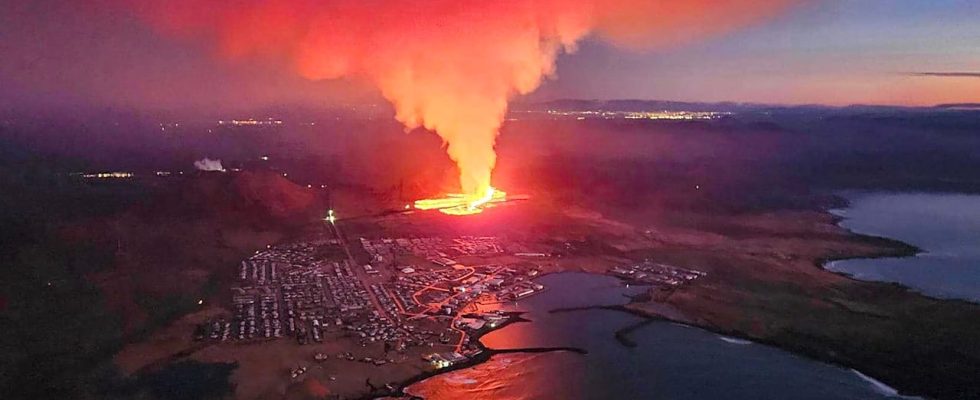The volcano is bubbling again!
The Icelanders were only able to breathe deeply for a few weeks. It was just before Christmas on the Reykjanes Peninsula Lava bubbled out of a crack in the earth. Now there was another eruption.
The second volcanic eruption within four weeks occurred on Sunday morning Live recordings from the Icelandic radio station RÚV to be observed. They showed glowing red lava fountains from a crack in the earth one kilometer long.
The port city of Grindavík (southwest of the capital Reykjavík) has now been completely evacuated. 4,000 residents had to flee to safety from the volcano.
Earthquake with hundreds of tremors
According to the Icelandic Meteorological Service IMO, a crack opened on both sides of the protective walls being built in the north of the small community.
A few hours before the eruption the Icelandic Meteorological Agency Vedurstofa An intense series of earthquakes with more than 200 tremors was recorded. The strongest one reached magnitude 3.5 early Sunday morning. It was warned that magma was moving beneath the Earth’s surface – with a high probability of an eruption.
The Iceland volcano is a baby volcano, only active since 2021. Even before the eruption in December 2023, there had been bubbling underground for months. After what experts considered a suspicious period of calm, the eruption occurred on December 18th.
A police car blocks the access to the road leading to Grindavík
Already in November, the residents of Grindavík had to leave their homes because of the possible dangers. The volcanic eruption in December lasted almost a week, but Grindavík was spared. Within a few days the intensity decreased significantly; Even before the Christmas holidays, lava was no longer visible on the earth’s surface.
The current outbreak is the fifth on the peninsula in three years.
With more than 30 active volcanic systems, Iceland is the largest and most active volcanic region in Europe. The island nation in the North Atlantic lies on the Mid-Atlantic Ridge, which separates the Eurasian and North American plates.

